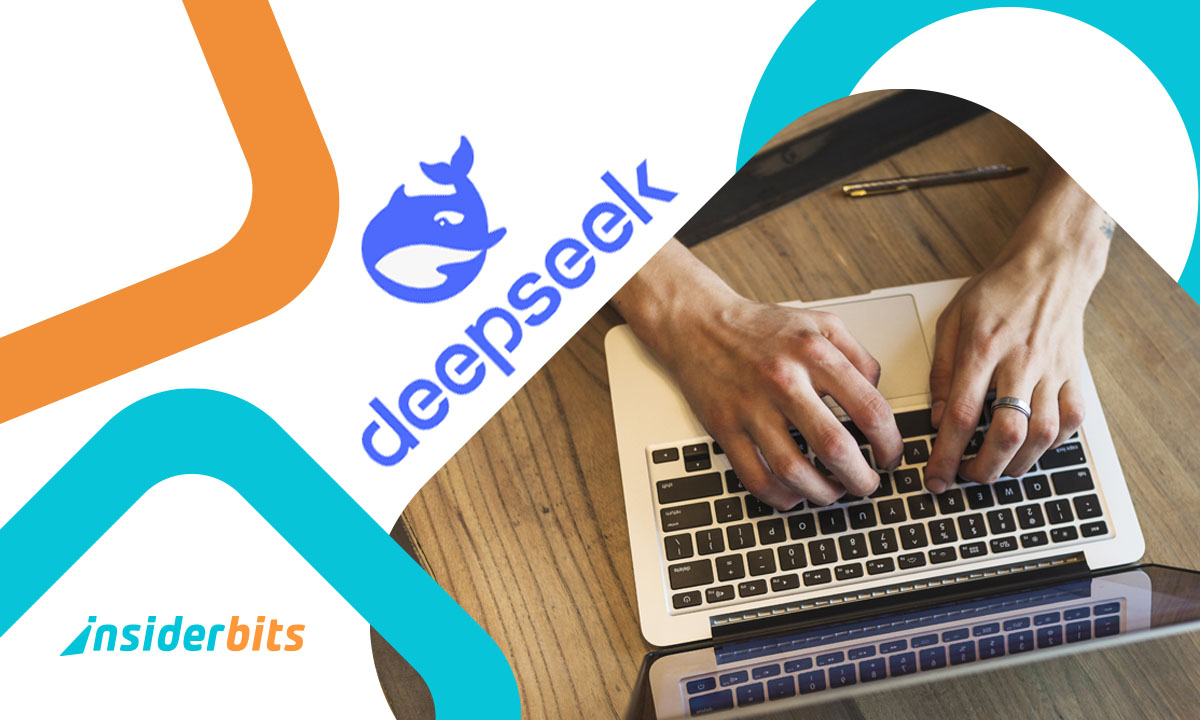The artificial intelligence landscape is undergoing a seismic shift with DeepSeek’s latest update to its flagship model, DeepSeek-V3-0324.
This significant upgrade positions the Chinese AI startup as a formidable competitor against industry giants like OpenAI, offering cutting-edge advancements in reasoning, programming, and efficiency.
As open-source AI gains momentum, the DeepSeek latest update could reshape how businesses and developers leverage large language models (LLMs).
DeepSeek Latest Update: A Game Changer?
DeepSeek has rolled out substantial improvements in its DeepSeek-V3-0324 model, enhancing its ability to process complex queries, generate code, and provide more accurate reasoning.
Secondo Reuters, this update outperforms previous versions in multiple benchmarks, including mathematical problem-solving and contextual understanding.
The model is now available on Viso abbracciato, reinforcing DeepSeek’s commitment to open-source AI development. This move not only accelerates adoption, but also fosters innovation within the global AI community.
About DeepSeek
Platforms: Web | API | Viso abbracciato
Model: DeepSeek-V3-0324 (Latest Update)
Caratteristiche principali: Advanced reasoning, multilingual support, open-source availability
Accesso: Free tier available, with enterprise options
Key Improvements in DeepSeek-V3-0324
The latest update to DeepSeek-V3-0324 introduces groundbreaking improvements that push the boundaries of what open-source AI can achieve.
These enhancements position DeepSeek as a viable alternative to proprietary models while offering unique advantages for specialized use cases.
Enhanced Reasoning & Problem-Solving
DeepSeek’s upgraded architecture demonstrates human-like logical analysis capabilities, particularly in:
- Scientific research: processing complex academic papers and extracting key insights;
- Technical troubleshooting: diagnosing system errors through natural language descriptions;
- Strategic planning: evaluating multiple decision pathways with probabilistic outcomes.
Benchmark tests show 15-20% improvements in tasks requiring multistep inference compared to previous versions, making it particularly valuable for data scientists and engineers working with unstructured information.
Advanced Coding Capabilities
The model now rivals specialized coding assistants with:
- Context-aware autocompletion: understanding project-specific patterns beyond generic syntax;
- Intelligent debugging: explaining errors and suggesting fixes with code examples;
- Multi-language support: seamlessly translating algorithms between Python, Java, and C++.
Early adopters report 30% faster development cycles when using DeepSeek alongside IDEs like VS Code, challenging GitHub Copilot’s dominance in the programmer toolkit.
Multilingual Proficiency
DeepSeek breaks language barriers with:
- Native-level fluency in 15+ languages, including Mandarin, Spanish, and Arabic;
- Cultural nuance recognition: adapting idioms and business etiquette appropriately;
- Real-time translation that preserves technical terminology accuracy.
This makes the model particularly valuable for:
- Global customer support automation;
- Localized content creation at scale;
- Cross-border legal/document analysis.
Optimized Efficiency
The engineering team achieved 2x faster inference speeds while:
- Reducing GPU memory requirements by 40%;
- Maintaining 99%+ accuracy on core tasks;
- Supporting cost-effective deployment on consumer-grade hardware.
Startups can now run sophisticated AI workflows without AWS/Azure dependencies, potentially cutting cloud costs by 60-70% compared to proprietary API solutions.
For a comprehensive look at how these capabilities evolved from earlier iterations, our technical deep dive on DeepSeek AI’s development explores the architectural decisions behind these improvements.
These advancements collectively position DeepSeek-V3-0324 as more than just another LLM—it’s becoming a versatile cognitive engine for professional workloads across industries.
The open-source availability further amplifies its impact by allowing organizations to tailor the model to their specific operational needs without licensing constraints.
How DeepSeek’s Update Challenges OpenAI’s Dominance
OpenAI has long led the AI race with models like GPT-4, but DeepSeek latest update introduces a cost-effective, high-performance alternative.
Unlike OpenAI’s closed ecosystem, DeepSeek’s open-source approach allows developers to fine-tune and deploy models without restrictive licensing.
A recent Forbes Tech report highlights how DeepSeek’s advancements could pressure OpenAI to accelerate its own innovations or reconsider pricing strategies.

The Role of Open-Source Platforms in AI Development
DeepSeek’s strategic decision to release its DeepSeek-V3-0324 model on Viso abbracciato highlights a pivotal shift in artificial intelligence development—one where transparency and community-driven innovation are becoming central to progress.
Unlike closed, proprietary systems controlled by a handful of tech giants, open-source AI models are reshaping the industry by:
Accelerating Global Collaboration
By making its model publicly accessible, DeepSeek invites developers worldwide to test, refine, and expand its capabilities. This crowdsourced approach leads to:
- Faster bug detection and fixes through community feedback;
- Custom fine-tuning for specialized use cases (medical, legal, financial AI);
- Cross-border knowledge sharing, particularly valuable for non-English language support.
Breaking Dependency on Proprietary AI
Closed AI systems like OpenAI’s GPT-4 or Google’s Gemini come with restrictive licenses, vendor lock-in risks, and unpredictable pricing. DeepSeek’s open model offers:
- No hidden costs: organizations can deploy it without recurring fees;
- Full transparency: users inspect the model’s architecture, reducing “black box” concerns;
- Long-term sustainability: companies aren’t at the mercy of a single provider’s policy changes.
Democratizing Access for Innovators
The high compute costs of training LLMs have traditionally favored well-funded corporations. Open-source models like DeepSeek’s disrupt this dynamic by:
- Enabling startups to build competitive AI tools without massive R&D budgets;
- Empowering academia with freely available research materials;
- Supporting global south developers who lack access to expensive cloud APIs.
The National Security Dimension
A Defense One report warns that open-source AI proliferation presents both opportunities and challenges:
- Opportunity: nations can develop sovereign AI capabilities without relying on foreign tech;
- Sfida: bad actors may exploit accessible models for malicious purposes (deep fakes, cyber attacks).
Case Study: Hugging Face’s Ecosystem
Platforms like Hugging Face have become the GitHub of AI by offering:
- Standardized model hubs (over 500K models available);
- Easy deployment tools (APIs, cloud integrations);
- Vibrant developer forums where techniques are openly shared.
The Road Ahead
While open-source AI promises a more equitable future, questions remain:
- Can community-driven models match the polish of commercial products?
- How will governments regulate dual-use AI technologies?
- Will corporations continue open-sourcing cutting-edge models, or reserve them as competitive advantages?
DeepSeek’s embrace of open-source distribution suggests a bold bet that collaborative development will ultimately produce superior AI—a philosophy that could redefine power structures in the tech world.
Future Implications of DeepSeek’s Advancements
Il DeepSeek latest update signals a broader trend in AI:
- Increased Competition – More players entering the high-stakes AI market;
- Democratization of AI – Open-source models empowering smaller firms;
- Faster Innovation Cycles – Rivalry pushing rapid advancements.
Will DeepSeek sustain this momentum? Much depends on adoption rates and whether it can maintain performance while scaling.





